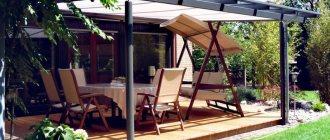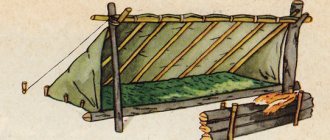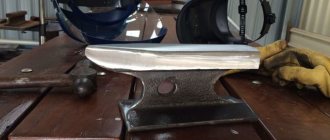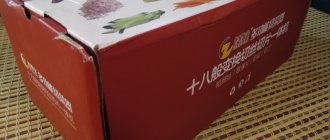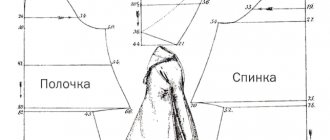You can make and install a canopy over the gate with your own hands without much effort. It will decorate the appearance of the outer part of the fence and protect the entrance leaf from negative environmental factors. The process of installing a visor involves following certain rules. The planning for creating a hanging element over the gate includes the selection of the optimally suitable material and the necessary tools. More details about everything below.
Arched type
What is the lining of the canopy over the porch made of?
If we talk about materials for cladding the canopy over the porch, there is a very wide choice.
Very often the canopy over the entrance to the house is made of the same material as the roof.
And this is correct, since in this case the result is a harmonious design of the house. With this solution, any roofing material is used:
- slate;
- metal tiles;
- corrugated sheeting; The canopy over the porch and the roof are covered with the same material - tiles. The style must also match. Soft tiles on the porch and roof. Metal tiles on the roof and canopy. If the style and material match, a harmonious look is obtained
- soft bitumen shingles;
- natural tiles;
The second option is to use the material that is used in the fence. In this case, both the design style and decorative elements should be recognizable. This will create a single ensemble with the site. Here the materials can be like this:
- slate (usually flat, but not a fact);
- corrugated sheeting;
- polycarbonate;
- wooden plank.
And the third option for designing a canopy over the porch is to install a canopy that is “neutral” in style and material. This may include:
- wooden canopy;
- polycarbonate (not necessarily cellular polycarbonate, there is also sheet polycarbonate); Polycarbonate combines with wood Looks good Long canopy not only over the porch, but also over the entrance path
- sheet plastic;
- glass.
Glass is used less often.
It is necessary to use reinforced types such as triplex, and not only are they expensive, they also weigh heavily, so additional suspensions or powerful support columns are definitely required.
And if you consider that sheet polycarbonate or plastic is not much different in appearance from glass, it becomes clear why glass is unpopular.
Working sketch
A good canopy over a garage door is the optimal combination of reliability, cost of work and a shape that is pleasing to the eye. As a rule, if the canopy is small, then you can set it to a standard look. For outstanding structures, you will have to calculate the load on the load-bearing elements and, based on the data obtained, choose a shape.
Single-pitch canopy
The simplest, and therefore most common, option for installing a canopy over a garage door is a conventional lean-to structure. In this case, it is easiest to assemble and attach the frame to the wall. The slope itself is made with a slight slope from the wall.
Example of a standard visor
Gable
Classic gable visor
It is not much more difficult to install a gable canopy over the garage. In this case, it will be possible to reduce the load on load-bearing elements spaced from the wall. The canopy can withstand heavy loads.
Arched
Arched canopies over the garage are less common, but they are also quite easy to make. Most often, polycarbonate is used for them, which bends easily and takes on rounded shapes. If desired, you can make a canopy from metal sheets.
Approximate drawing of an arched structure
Domed
Perhaps domed canopies are the most impressive structures, but they are difficult to assemble
Their main quality is individuality, their own style, so it is very important to try to create something of their own, unique. In other words, it is better not to use standard projects, but only partially copy them, adding good finds and original moves
Overview of species
Wickets according to the type of execution are divided into the following types.
An opening structure that is part of a gate. The gate acts as a fragment of the gate and has an additional lock that prevents the gate from opening completely. You can open the gate itself (together with the gate) or leave only the gate open. The foundation of this model is the base built into the gate leaf. On one side there are hinges on it, and on the other there are recesses for the lock blockers and the main rod of a separate bolt.
The owner selects the desired option based on the width of the yard, and also depending on whether there is a gate for car entry. A visor, a beautiful forged ornament, or a structure hidden in the fence are all additional, secondary attributes. A hidden gate looks no different from a fragment of a fence. You can guess that this is a gate, and not part of a fixed fence, by the presence of thin cracks, holes for keys and a slot for a mailbox. There may be lights illuminating the yard, directed inside the fenced area, an intercom calling panel, etc. The gate can be sliding: separately or together with the gate.
Varieties of forms
When choosing the shape of the canopy, they take into account not only their preferences, but also the architecture of the building. The most common forms are the following:
- The dome shape not only has an original appearance, but also occupies a smaller area compared to other types of structures, which is important for small, compact porches. You will be able to save not only on material, but also on your own efforts to maintain such a structure. Thanks to its streamlined shape, precipitation does not accumulate on the surface of such a canopy, and the canopy is also not afraid of strong winds.
- Arched and semi-arched forms are recommended for a porch with a canopy in a region with heavy snow loads and rain.
- The lean-to form is the easiest to install, ensuring natural removal of moisture from its surface.
- The gable shape is a durable and stable type of structure.
- The flat shape is rare and is recommended for arid regions with little precipitation and no snow loads.
Awnings can be classified according to the type of installation into support-mounted and hinged. The first ones are the most massive, since they are fixed on one side to the facade, and on the other - on supporting pillars made of metal or wood. Wall-mounted structures are lightweight and compact in size; they are fixed on the facade directly above the platform at the entrance door.
The choice of one or another type of canopy depends on the region of construction. Where there is heavy rainfall and strong winds, it is recommended to install more practical support structures that can not only adequately withstand external influences, but also reliably protect the entrance group from them.
How to fix if the wall is multi-layered
Recently, more and more buildings have multi-layered external walls - ventilated facades, insulation... The load-bearing part of the wall turns out to be covered with a couple of layers of materials, the load-bearing capacity of which is only enough to hold its own weight. You won't be able to attach anything to them. The entire load must fall on the load-bearing wall.
How to attach a canopy over the front door to a three- or two-layer wall
Even if the outer layer is a finishing brick, it costs nothing to attach to it. Masonry is usually carried out in half a brick. So it only looks durable on the outside. Even the smallest and lightest canopy cannot support the weight, and the supporting columns do not help either.
Therefore, with any multi-layer wall, holes are made in all finishing/insulating layers, and the structural elements are attached to the load-bearing wall.
Types of visors
Canopy over the entrance: general device
Structurally, a canopy or canopy consists of a frame made of durable material, as well as cladding in the form of roofing material. Depending on the size of this structure, it may be provided with racks, although they are not a mandatory element, but sometimes without them there is no confidence that the structure will not fall under the influence of precipitation (especially snow).
In order not to install additional racks, since it is often impossible to install them, the slope of the canopy is made maximum so that precipitation does not linger on it. As a rule, when the possibility of installing additional supports does exist, they are installed to guarantee the reliability of the entire structure, since if it falls, it can seriously harm a person.
Manufacturing materials
For the installation of the frame, as well as the canopy supports, the following structural materials are used:
- Metal corners.
- Metal pipes.
- Metal strips.
- Profiled metal pipes.
- Wooden beam.
Recently, profiled metal pipes have become very popular for the manufacture of various frames. This is due to the fact that profiled pipes are more durable with the same cross-section when compared to conventional round pipes. In addition, profiled pipes are more technologically advanced, since they are easier to attach to various surfaces, easier to weld together, easier to bend, and this design combines perfectly with cold forging elements, and in terms of strength they are not inferior to other structural materials made of metal.
What material is best to use for a canopy as a cover?
Nowadays, facing materials are produced in a fairly wide range, including roofing. It is better to cover the canopy over the porch with the same roofing material as the roof of the entire house, which corresponds to the general style. Unfortunately, this is not always possible due to some design features of the canopy.
The following roofing materials are used as finishing materials:
- Slate.
- Metal tiles.
- Profiled sheeting.
- Soft bitumen shingles.
- Natural tiles.
If you use materials that are used in fencing the site as roofing material for the canopy, this will allow you to preserve a certain design style inherent in the entire site. In this case, the following will do:
- Slate, both regular and flat.
- Profiled sheeting.
- Polycarbonate.
- Wooden plank.
The following design option for a canopy over a porch can be considered neutral, since it does not take into account any design style of either the house or the site as a whole. Therefore, when designing, it is permissible to use:
- Wooden elements.
- Any types of polycarbonate.
- Sheet plastic.
- Glass.
Naturally, glass is used very rarely, especially when decorating a canopy over a porch in a private house. This is due to the fragility of the material, which requires special, expensive glass, which also has an impressive weight, which requires the installation of a special reinforced frame with racks. It can be replaced with polycarbonate, which is characterized by a high degree of manufacturability and low weight. Because of this, this material is becoming increasingly popular.
What can awnings look like?
Shapes and names of canopies over the porch
The shape of the canopy over the steps can be absolutely varied, while the canopy must fulfill its functions of protecting the porch from precipitation. The simplest option is to install a lean-to canopy, which many people do. At the same time, it should be noted its shortcomings, which are not so few. Firstly, this is not a very beautiful design, and secondly, all precipitation ends up in front of the steps, which is not very comfortable, despite the fact that the design is quite simple and requires a minimum of costs, both for manufacturing and installation. This design is more suitable for regions where there is not much rainfall. On the other hand, the canopy does not remove much rainfall, since its area is quite small compared to the area of the entire roof of the house, so this is a fairly acceptable option.
Gable canopies are somewhat more complex structurally, since they are made in the form of a “house” or in the form of an arch. The advantages of such canopies are obvious, since precipitation is diverted along the sides of the porch, which does not interfere with the main passage. This is an excellent option for regions with high rainfall.
Modern canopies over the entrance
Watch this video on YouTube
Beautiful and durable awnings for the porch and front door from “Canopy Master”
Openwork metal for those who appreciate beauty
The Canopy Master company has been manufacturing and installing canopies and canopies of any shape and configuration for more than ten years. Indeed, one cannot fault their price-quality ratio. The company's professional craftsmen will quickly produce a metal canopy over the entrance or porch of any complexity. This product will decorate the facade of your country house!
An integral element of each entrance is a visor. Without it, the front door to a private house looks unfinished
In addition, it has an important practical purpose, which is its protective function. The article will discuss the types of designs, as well as an option for making your own canopy over the porch
Installation of gates on support pillars
We chose the fittings, assembled the gate frame, waited for the concrete to harden and began installing the gate. It is necessary to measure the exact fastening of the door in a vertical position, leaving a gap of at least 1 cm at the bottom. We measured and marked the places where the gate was attached, and then we fixed it to the support by welding. Now we fasten the hinges by welding only with a continuous seam.
Next, we prepare the fixed part for sewing. First of all, we sand, remove rust, prime, and paint with special paint. We are trying to close the lock with something.
Drawings and projects
The construction of the canopy requires the mandatory drawing up of a drawing of the future structure; the calculations are based on:
- the selected material, which should not only fit harmoniously into the overall design of the building, but also have a sufficient degree of strength and stability;
- type of canopy - flat, single-pitched, gable, arched, etc.;
- dimensions of the visor - its length, width and depth;
- location - the design for awnings over the main and emergency exits, as a rule, differs significantly.
Key points to consider when drawing up a drawing:
- the width of the canopy should be 50 cm larger than the doorway;
- The optimal angle of inclination for a pitched canopy is 20 degrees.
A drawing is really necessary when equipping a canopy. It will not only help you correctly perform all the necessary installation work, but will also allow you to calculate the required amount of materials.
We measure the dimensions of the gate
The door parameters can be any, which is very convenient. When determining the size, calculate the width and height.
The acceptable width of the gate will be 1 meter; it is convenient because it makes it possible to carry large items. If the width is made more than a meter, then the door will quickly wear out, since the large size will affect the hinges or its leaf will warp.
The optimal height of the gate should be no more than 2 meters, otherwise it will not be aesthetically pleasing.
Varieties
There are different methods for classifying visors.
The most common of them is the shape of the structure.
- The dome and spherical configurations are undemanding in terms of space, are characterized by quick installation and savings in consumables. The streamlined shape is critical for regions with high winds.
- Arched and semi-arched options involve natural drainage of rainwater, are stable and durable, which makes them relevant in areas with high levels of snowfall. The hinged canopy does not require a large amount of consumables.
- Shed roofs are easy to install.
- Gable products are adapted for increased amounts of snow.
- Flat options are a godsend for those who like to decorate a room with flowers.
- Due to their attractiveness, concave configurations are widely in demand. Features of the shape contribute to the unhindered melting of snow.
Types of visors according to fastening methods:
- suspended – the material usually used is corrugated board, polycarbonate or glass;
- hinged - made only of polycarbonate;
- support – any consumables are used here.
Preparing to start work
Corrugated sheeting is a metal material, so it is important to follow the entire order of work. Here you cannot ignore the stage of preparing for the construction of a garden fencing element
The slightest mistake or oversight will affect the appearance of the gate and can ruin it. Completing all preliminary manipulations guarantees a high probability of obtaining a good-looking product. When deciding to make it yourself, you first need to:
- study the designs and choose something from the available ones or come up with your own (taking into account the terrain and other parameters);
- determine the dimensions of the frame and draw up drawings;
- select all the necessary materials and tools.
Studying designs
A gate made of corrugated sheets will attract the attention of passers-by with its originality, if you make a little effort to choose the optimal design. This is a kind of calling card of the house and its owner, so you should be careful about the selection. There are elements of fencing structures of this type in the form of arches and rectangular ones. The first ones look very impressive, but require special experience and skill, so they are suitable for execution by a professional. The latter can be performed by a novice craftsman and, when choosing a winning option, will also look decent.
Wickets made from corrugated sheets are distinguished by the ability to install them in fences made of completely different materials: mesh, brick and many others. This will not spoil the appearance of the fence at all, but will give it greater effectiveness. Therefore, it should be said about the versatility of corrugated sheeting.
Depending on how much space there is, the location of the structure, the amount of purchased or available material, the optimal design option is selected. It can be made in the form of a simple leaf. The doors can be solid or cover the center (in this case, there are grilles on the bottom and top sides).
A more complex design is possible: with vertically or horizontally located openings. They can be covered with gratings (made from reinforcing bars) in the shape of squares or strips.
Wickets may contain inserts in their design. Forged inserts will help strengthen the frame and decorate it. This will make the structure rigid. An equally advantageous option are rectangular contrasting inserts.
There are many options for making frames, but they are selected according to the following requirement: they must be smooth and rigid. Horizontal jumpers, or joists, and diagonal inserts, or stiffeners, make it possible to achieve a rigid frame. It is possible to have stiffeners running through the entire structure or intersecting each segment (the structure can be divided into segments using cross members).
Frame drawings and dimensions
The standard width of a gate is one meter. This structure is optimal for bringing in and taking out furniture and other items. A wider gate is prone to deformation and shorter service life due to rapid wear of the hinges.
The standard height is considered to be from 2 to 2.2 meters. If the same parameter of the fence fabric is higher than this parameter, it is recommended to install metal lintels at the opening site.
If people live in a residential building about two meters tall, an installed gate that is higher than the specified parameters requires reinforced hinges and additional reinforcement of the frame.
It is possible to make gates without crossbars (to simplify the task).
The recommended installation location is a concrete foundation buried below the level to which the soil freezes.
Selecting materials and tools: tips for craftsmen
The sheet for making a gate must be galvanized on both sides, and polymer protection must be present on one of them. External imitation of stone, wood, brick is possible.
The sheets are marked. To carry out work on installing gates, modifications with a capital letter “C” in the marking or with two capital letters “NS” are suitable. It is advisable to carry out the cladding with sheets with the letter “C” and the numbers 20-21 in the markings. The number after the letter corresponds to the height of the wave in the profile. It is possible to install sheets in both length and width. When painting, the use of powder paints or polymers is allowed. It is allowed to paint profiled sheets on both sides. Recommended thickness is from 0.45 to 0.50 mm. In the marking, the height is indicated first, then the thickness, width, and length of the sheets.
How to make a wooden canopy over the entrance to a wooden house with your own hands
A wooden extension gives the appearance of a finished construction to a wooden house, and the development and implementation of the project can easily be carried out independently, subject to accurate calculations and full compliance with the work technology.
To build a canopy 2.2 meters high and 2.1 meters long with your own hands, you need to prepare the following:
- Four supports, for which you can use logs with a diameter of 20 cm or timber with a cross-section of 20*20 cm. In this case, two supports should have a length of 2.7 meters, and two – 2.5 meters.
- Elements for the rafter system; beams with a cross section of 10*10 cm or 5*5 cm are suitable for this.
All lumber must be treated with fire retardants and antiseptics to prevent rotting and fire of wooden elements.
Direct installation is carried out as follows:
- According to the drawn up drawing, markings are made around the porch and the fertile layer of soil is removed.
- Holes are dug in the corners for installing pillars; their depth should be at least 70 cm. Sand is poured into a 20 cm layer at the bottom of each hole and compacted well, then crushed stone is poured in the same layer and compacted well.
- A little concrete mixture is poured into each hole on top of the cushion and a support treated with bitumen mastic is placed. Using a building level, check the verticality of the post and completely fill the hole with concrete. All supports are installed in the same way. For the concrete to completely harden, work must be stopped for about a week.
- After the concrete has reached its final strength, the assembly of the frame begins. To do this, the upper part of the supports is cut down to the appropriate height, ensuring the required slope of the slope.
- Next, install the top trim around the perimeter of the canopy roof over the porch so that the structure becomes rigid.
- The pillars located near the wall are fixed with angles or anchor bolts. Logs and rafters are laid on top of the pillars; the distance between the last elements is maintained at about 25 cm.
- Laying roofing material. In this case, polycarbonate can be attached directly to the sheathing; other coatings require additional waterproofing. Roofing felt can be used under sheet roofing materials; a special mastic can be applied to the canopy of a soft roof.
- The joint between the wall and the canopy also requires sealing to prevent moisture from penetrating in this area. The simplest option is a sheet of galvanized metal, from which a strip of a certain size is cut. This element is attached using mastic over the waterproofing on the wall and sheathing, then additionally fixed with self-tapping screws. These steps must be completed before laying the roofing material. When using polycarbonate for the roof canopy, the joint between the wall and the canopy is filled with sealant.
Carved decorations or curly notches can add originality to a wooden canopy.
Construction guidelines
If you decide to do all the work on building a garage with a canopy yourself, to make the task easier, choose a project with a straight configuration, without curved shapes.
Experts recommend doing the work in the following order:
- the site is marked out indicating the installation locations for canopy posts;
- holes are made for the foundation with a depth of more than 0.6 m and a diameter of approximately half a meter;
- supports are installed and secured with broken bricks or stones;
- the base of the supports is filled with concrete, which will harden after 24 hours, but in order for the result to be high-quality, professionals recommend starting the next stage only after 3 days;
- the supports are connected by horizontal jumpers along the entire perimeter;
- the roof frame is installed on the lintels;
- The roof is installed on the canopy frame.
Main works
As already noted, polycarbonate is the most affordable material
Although it doesn’t matter what the frame will be made of. Wood is most often chosen, but since its service life is short, the boards are additionally impregnated with compounds for strength and protection against mold.
Self-tapping screws are used to attach protective sheets. In the photo of the canopy over the gate you can see how such a structure would look.
An aluminum profile is more reliable, performs well in operation, bends easily, and any fasteners can easily fit into it. The advantage is that there is no need to additionally paint or prime anything. There are corners and profiles on sale, from which it is easy to mount the required structure.
On the subject: Restaurant "Yolki" in Ryazan: description, menu, address
Some resort to using metal pipes. Often, in order to save money, previously used material is used. The only negative is that you will need to make seams and cutting by welding. When there is no experience working with such a device, it is not always rational to hire a specialist. That's a lot of money. It is better to exclude the option of using metal pipes.
Metal corners are available for sale; they are also used to make a frame for a canopy. Work with them is carried out by welding or using bolts. But such a frame will need to be treated with anti-corrosion compounds. And this is an additional financial investment.
The most beautiful and unusual option is to create a forged frame with additional distinctive details. This is an expensive model, although it is often found in private country houses.
Once these basic points have been decided upon, you can begin to build the canopy. The procedure is simple, and it is not always necessary to invite a specialist. The basis is supports made of any material - wood, bricks, metal. The range of work is simple, you just have to prepare everything.
Which material is most suitable?
When choosing what to make the canopy from, you should focus on the fence itself and the gate. One of the unique ones is forged, but the roof can be made of:
- polycarbonate;
- corrugated sheets;
- metal tiles;
- plexiglass;
- PVC sheets;
- galvanizing;
- slate, etc.
It is easy to install a canopy over the gate using polycarbonate with your own hands. This material is simple, beautiful, and inexpensive. Since there is a demand for it, manufacturers are trying to create it in different colors. The assortment includes unique visors of various shapes.
Species and types
If we talk about the structure as a whole, the canopy or canopy over the porch consists of a frame and roofing material (cladding). There may also be support posts that support the outer edge of the canopy. They are an optional element. They are needed when there is no confidence that the structure without additional supports will be able to retain precipitation.
Canopy over the entrance: general device
Precipitation generally means snow. In regions with a lot of snow, you can either make the slope of the canopy steep so that the snow melts quickly, or install additional supports. You can do both, as is usually done - the margin of reliability/strength reassures and instills confidence.
Frame and stand materials
The frame and supports of the canopy over the front door are made from:
- metal: steel angle;
- metal strips;
- round pipe;
- profiled pipe;
The most popular material recently for making the frame of a canopy over a porch is profiled pipe. With equal dimensions and wall thickness with a round pipe (if we compare the diagonal and diameter), the profile has greater rigidity. At the same time, it comes in a variety of sections - a square and a rectangle with different sides, it can be bent into arcs, it is easier to weld and attach to walls, it goes well with elements of traditional or cold forging, and its durability is the same as other steel products. In general, it is the profiled pipe that is in favor today.
What is the lining of the canopy over the porch made of?
If we talk about materials for cladding the canopy over the porch, there is a very wide choice. Very often the canopy over the entrance to the house is made of the same material as the roof. And this is correct, since in this case the result is a harmonious design of the house. With this solution, any roofing material is used:
- slate;
- metal tiles;
- corrugated sheeting;
- soft bitumen shingles;
- natural tiles;
The second option is to use the material that is used in the fence. In this case, both the design style and decorative elements should be recognizable. This will create a single ensemble with the site. Here the materials can be like this:
- slate (usually flat, but not a fact);
- corrugated sheeting;
- polycarbonate;
- wooden plank.
And the third option for designing a canopy over the porch is to install a canopy that is “neutral” in style and material. This may include:
- wooden canopy;
- polycarbonate (not necessarily cellular polycarbonate, there is also sheet polycarbonate);
- sheet plastic;
- glass.
Glass is used less often. It is necessary to use reinforced types such as triplex, and not only are they expensive, they also weigh heavily, so additional suspensions or powerful support columns are definitely required. And if you consider that sheet polycarbonate or plastic is not much different in appearance from glass, it becomes clear why glass is unpopular.
Shapes of canopies
There are more than a dozen forms of canopies over the front door. The easiest one to make is a lean-to canopy. Requires a minimum of effort and materials, and can look very good. The downside is that when the snow melts, a snowdrift will end up in front of your door and will urgently need to be removed. Other models with slopes tilted forward suffer from the same “disease”. These are excellent options for regions with little snow in winters, but with hot sun - not quite for our latitudes. Although, if you are not afraid of the need for urgent snow removal, you can do any of the options.
Shapes and names of canopies over the porch
It’s a little more difficult to make a gable canopy (this is the house) and a simple arch. They are good because the melted snow ends up on the sides of the entrance and, even if there is a large amount of it, there is no need to urgently remove it. So for regions with a lot of snow, these are the best models.
Sheet selection
When going to the store, you may be faced with a choice:
- Cellular is a sheet containing small spaces with jumpers between each other. They are what are required for rigidity, although in general this type bends easily and takes on any shape without breaking. When creating an unusual design, craftsmen choose exactly this type.
- The monolithic sheet is comparable to glass, but at the same time safe, reliable and durable. Don’t assume that it’s difficult to bend; there won’t be any problems with that. Therefore, it is quite possible to create curved lines on the visor. In terms of cost, it is slightly higher than the first model, but in terms of performance characteristics there is no big difference.
Before making a choice of material for the canopy over the gate, it is worth considering the positive aspects of polycarbonate:
- Light weight, so there is no need to make an overly strong frame and supports. Everyone can handle the installation independently, without an assistant.
- At the same time, resistance to various precipitation, winds and physical impact is noted.
- Due to its flexibility, the material has become widespread. Arches and even balls are made from it.
- Transparent - does not obscure, but does not transmit ultraviolet radiation.
- There is no need to use unusual care techniques. Leaves, dust and dirt are simply washed off with water.
- If you want to create a glass effect, then polycarbonate is the best solution. It will not break into dangerous fragments.
- When certain tricks are used, the shelf life of such material increases to 10 years.
- A variety of colors, attractive appearance, the ability to create any design.
All these are important aspects that every person focuses on when creating awnings over the entrance gates. The external attractiveness and material consumption will depend on the shape of the structure, so this issue is resolved in advance.
